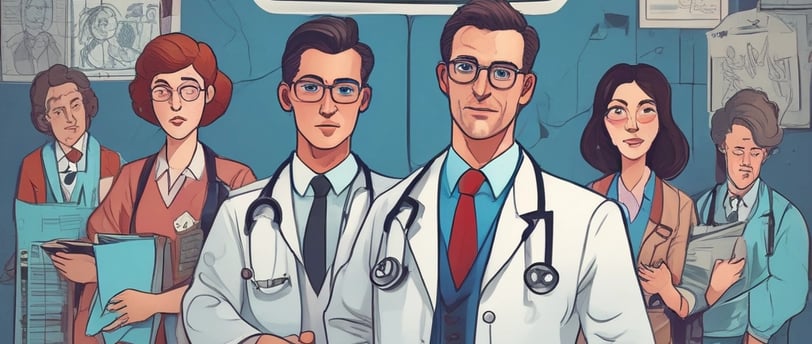Enhancing Patient-Doctor Communication: A Pathway to Better Healthcare
6/27/20222 min read


The Importance of Effective Communication in Healthcare
Effective communication between patients and doctors is fundamental to quality healthcare. The clarity of interaction not only influences the patient’s experience but also impacts their outcomes. When patients feel well-informed and understood, they are more likely to engage positively with their healthcare journey. This blog post explores how we can enhance patient-doctor communication, ensuring a prescription for effective healthcare delivery.
Barriers to Open Communication
Despite the vital role communication plays, several barriers can impede open exchanges between patients and their healthcare providers. Language differences, health literacy, and emotional barriers often prevent patients from expressing their concerns and asking pertinent questions. Moreover, a busy medical environment can hinder physicians from dedicating the necessary time to foster meaningful dialogues. Recognizing these challenges is crucial in developing strategies to overcome them.
Strategies for Improving Communication
Improving communication between patients and doctors requires collaborative efforts focused on clarity and understanding. Here are several strategies to enhance this interaction:
- Active Listening: Doctors should practice active listening to fully understand their patients' concerns. By paraphrasing and summarizing key points, physicians can demonstrate their attentiveness.
- Open-Ended Questions: Encouraging patients to elaborate on their symptoms and concerns by employing open-ended questions fosters a deeper exchange of information.
- Simplify Medical Jargon: It is essential for healthcare providers to avoid complex medical terminology when communicating with patients. Simplifying the language can help ensure that patients understand their diagnoses and treatment options.
- Cultural Sensitivity: Healthcare providers must embrace cultural diversity and adapt their communication style to respect and acknowledge different cultural backgrounds, thereby enhancing comprehension and trust.
- Utilizing Technology: Integrating technology in communication, such as patient portals and telemedicine, can bridge gaps. These tools allow patients to share information and ask questions conveniently.
Ultimately, the goal of these strategies is to create a collaborative environment where patients feel empowered to participate actively in their care. By fostering open dialogues, we can help ensure that patient preferences and concerns are acknowledged and addressed.
In conclusion, effective patient-doctor communication plays an integral role in improving healthcare outcomes. By understanding the barriers and employing tailored strategies to enhance conversations, healthcare providers can significantly impact their patients' experiences. As we strive to make patient-doctor communication the best it can be, we pave the way for a healthier society where patients are engaged partners in their healthcare journeys.

FIRST OF ITS KIND IN THE WORLD!
VIDEO MEDICAL RECORDS (VMR)
hello@powerconsent.com
+91 7997798989
Copyright © 2025, Power Consent. All rights reserved. "Crafted with 🩷 by Roxtah"
Power Consent Solutions Pvt Ltd
MIG 287, 4th Street, opp. Global Edge School, K P H B Phase 1, Kukatpally, Hyderabad, Telangana 500085
